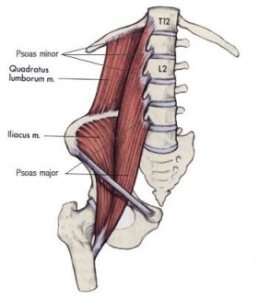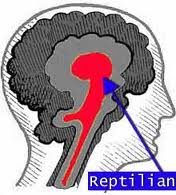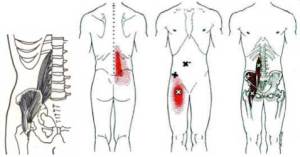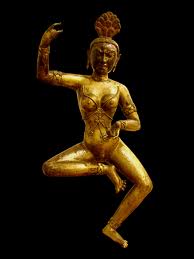Bikram Yoga Chadds Ford
Yoga for You
Psoas: your deepest muscles

At BYCF’s most recent posture clinic, Dean Hutcherson took students through a series of energetic, stretching and self massage exercises designed to help us identify and heal the deepest muscles of our bodies, the psoas.
The psoas is a stabilizing muscle, located deep in the core of the abdomen. Many leading health practitioners (among them author Liz Koch) view the psoas as not only a muscle but also as an intelligent organ that ’embodies our deepest urge for survival, and more profoundly, our elemental desire to flourish.’
The psoas muscles are essential to physical, mental and emotional health.  The Psoas serves many purposes. It creates structural balance, muscular integrity, flexibility, strength, range of motion, joint mobility, and organ functioning.
The Psoas serves many purposes. It creates structural balance, muscular integrity, flexibility, strength, range of motion, joint mobility, and organ functioning.
Growing out of both sides of the spine, the psoas spans from the 12th thoracic vertebra (T12) to each of the 5 lumbar vertebrae. From there it flows down through the abdomen and the pelvis, to attach to the top of the thigh bone. The Psoas is the only muscle to connect the spine to the legs. It holds us upright, and lifts our legs so we can walk. A healthy psoas stabilizes the spine and provides support through the trunk, forming a shelf for the vital abdominal organs.
The psoas is connected to the diaphragm through connective tissue or fascia which affects both our breath and fear reflex. This is because the psoas is directly linked to the re ptilian brain, the most ancient interior part of the brain stem and spinal cord. As Koch writes “Long before the spoken word or the organizing capacity of the cortex developed, the reptilian brain, known for its survival instincts, maintained our essential core functioning.”
ptilian brain, the most ancient interior part of the brain stem and spinal cord. As Koch writes “Long before the spoken word or the organizing capacity of the cortex developed, the reptilian brain, known for its survival instincts, maintained our essential core functioning.”
Koch believes that our fast paced modern lifestyle (which runs on the adrenaline of our sympathetic nervous system) chronically triggers and tightens the psoas – making it literally ready to run or fight. The psoas helps you to spring into action – or curl you up into a protective ball. If we constantly contract the psoas to due to stress, tension or repetitive movement (e.g. running and cycling) , the muscle eventually shortens.
This shortening can give way to painful conditions including low back pain, sacroiliac pain, sciatica, disc problems, spondylolysis, scoliosis, hip degeneration, knee pain, menstruation pain, infertility, and digestive problems.  A tight psoas not only creates structural problems, it constricts the organs, puts pressure on nerves, interferes with the movement of fluids, and impairs diaphragmatic breathing. In fact, “The psoas is so intimately involved in such basic physical and emotional reactions, that a chronically tightened psoas continually signals your body that you’re in danger, eventually exhausting the adrenal glands and depleting the immune system.”
A tight psoas not only creates structural problems, it constricts the organs, puts pressure on nerves, interferes with the movement of fluids, and impairs diaphragmatic breathing. In fact, “The psoas is so intimately involved in such basic physical and emotional reactions, that a chronically tightened psoas continually signals your body that you’re in danger, eventually exhausting the adrenal glands and depleting the immune system.”
And according to Koch, this situation is exacerbated by many things in our modern lifestyle, from car seats to constrictive clothing, from chairs to shoes that distort our posture, curtail our natural movements and further constrict our psoas. Koch believes the first step in cultivating a healthy psoas is to release unnecessary tension. But “to work with the psoas is not to try to control the muscle, but to cultivate the awareness necessary for sensing its messages. This involves making a conscious choice to become somatically aware.”
 A relaxed psoas is the mark of play and creative expression. Instead of the contracted psoas, ready to run or fight, the relaxed and released psoas is ready instead to lengthen and open, to dance. In many yoga poses (like tree) the thighs can’t fully rotate outward unless the psoas releases. A released psoas allows the front of the thighs to lengthen and the leg to move independently from the pelvis, enhancing and deepening the lift of the entire torso and heart. Koch believes that by cultivating a healthy psoas, we can rekindle our body’s vital energies by learning to reconnect with the life force of the universe. Within the Taoist tradition the psoas is spoken of as the seat or muscle of the soul, and sur
A relaxed psoas is the mark of play and creative expression. Instead of the contracted psoas, ready to run or fight, the relaxed and released psoas is ready instead to lengthen and open, to dance. In many yoga poses (like tree) the thighs can’t fully rotate outward unless the psoas releases. A released psoas allows the front of the thighs to lengthen and the leg to move independently from the pelvis, enhancing and deepening the lift of the entire torso and heart. Koch believes that by cultivating a healthy psoas, we can rekindle our body’s vital energies by learning to reconnect with the life force of the universe. Within the Taoist tradition the psoas is spoken of as the seat or muscle of the soul, and sur rounds the lower “Dan tien” a major energy center of body. A flexible and strong psoas grounds us and allows subtle energies to flow through the bones, muscles and joints.
rounds the lower “Dan tien” a major energy center of body. A flexible and strong psoas grounds us and allows subtle energies to flow through the bones, muscles and joints.‘If we all walked with our psoas active and our spines caressed with the wavelike motion this produces, our minds would arrive at a state of silence. We would then see every human being as part of the same consciousness that animates us all. Yoga calls for restoring this awareness, which draws us to naturally abide in nonviolence.’ -Gregor Maehle